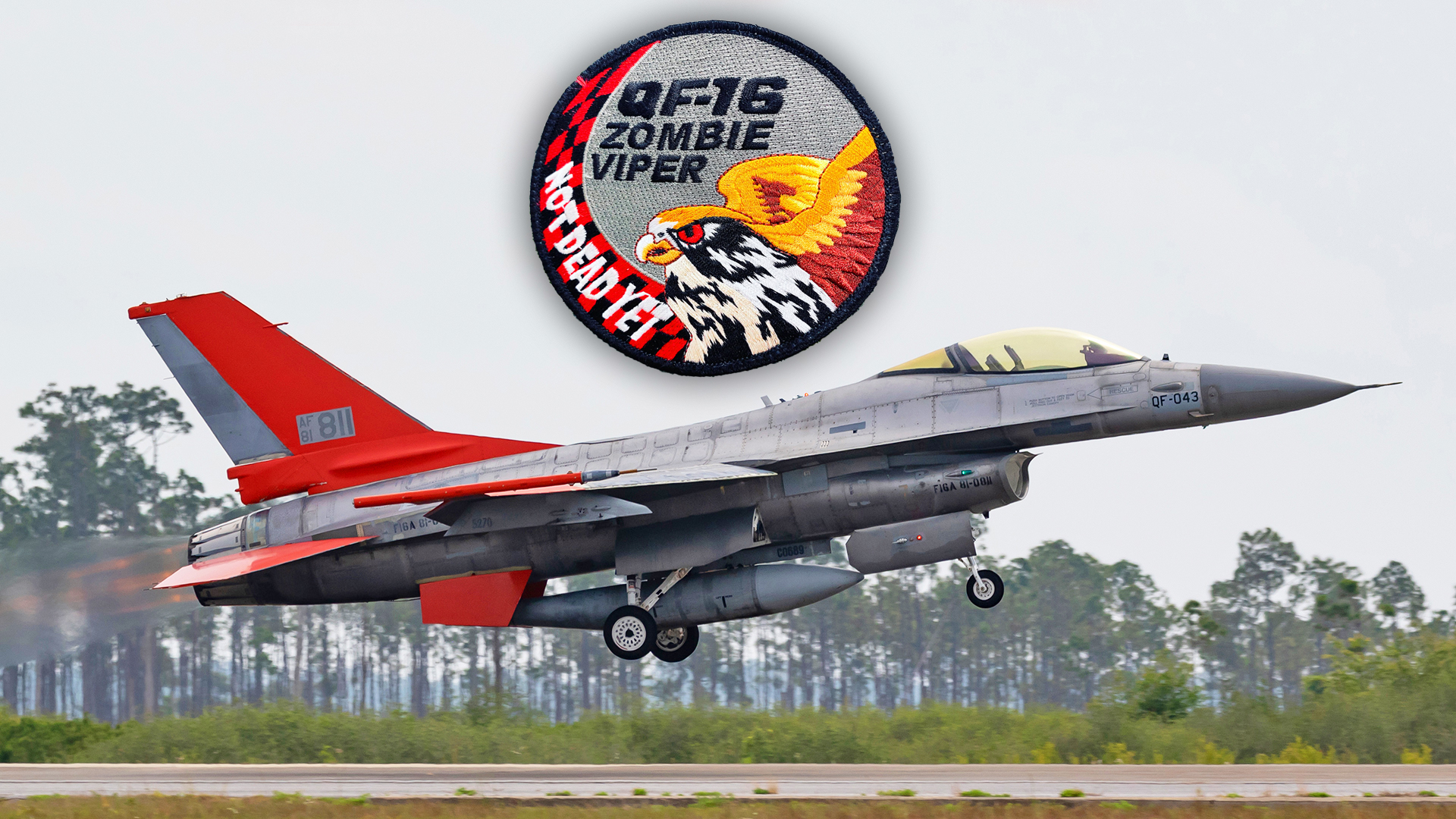Combat Archer, the U.S. Air Force-led live missile firing exercise in Florida, has some truly unique characteristics. Flying unmanned QF-16 ‘Zombie Vipers’ that act as realistic targets for the live missile shots is definitely one of them. Under the 53rd Weapons Evaluation Group (WEG), which oversees the exercise, the remotely controlled drones are a critical element of the missions and are often blown out of the sky by squadron pilots as they put their skills to the test.

The operations of the modified QF-16s that often feel the full punch of advanced missiles, are unlike any other in the U.S. military. These jets are flown both manned and unmanned, meaning that the pilots who fly these remote-controlled ‘enemy fighters’ have a unique role within the military and regularly fly some truly jaw-dropping missions.
Editor’s Note: Welcome to WSEP Week day two at The War Zone! Each day this week we have a major feature on the Pentagon’s biggest air-to-air live fire exercise that works to ensure the weapons, tactics, and people that give it an edge over its adversaries will all work as they are supposed to in a real fight.
“We often fly the QF-16 with a pilot in the cockpit, while an X-ray [remote pilot] is actually flying the aircraft from the ground station via remote control,” explains Tom Mudge, a U.S. government QF-16 pilot at Tyndall Air Force Base’s 82nd Aerial Targets Squadron (ATRS). “When flying the QF-16 from the ground under remote control, it’s fairly easy to make mistakes, because you don’t get the feeling of G-forces and you’re not hearing the noises from the jet. The X-ray pilot relies solely on computer screens and instruments. [There’s no live video feed to look at either]. So we regularly train with a pilot in the cockpit who oversees the flight — with hands off the controls — from take-off to landing!”
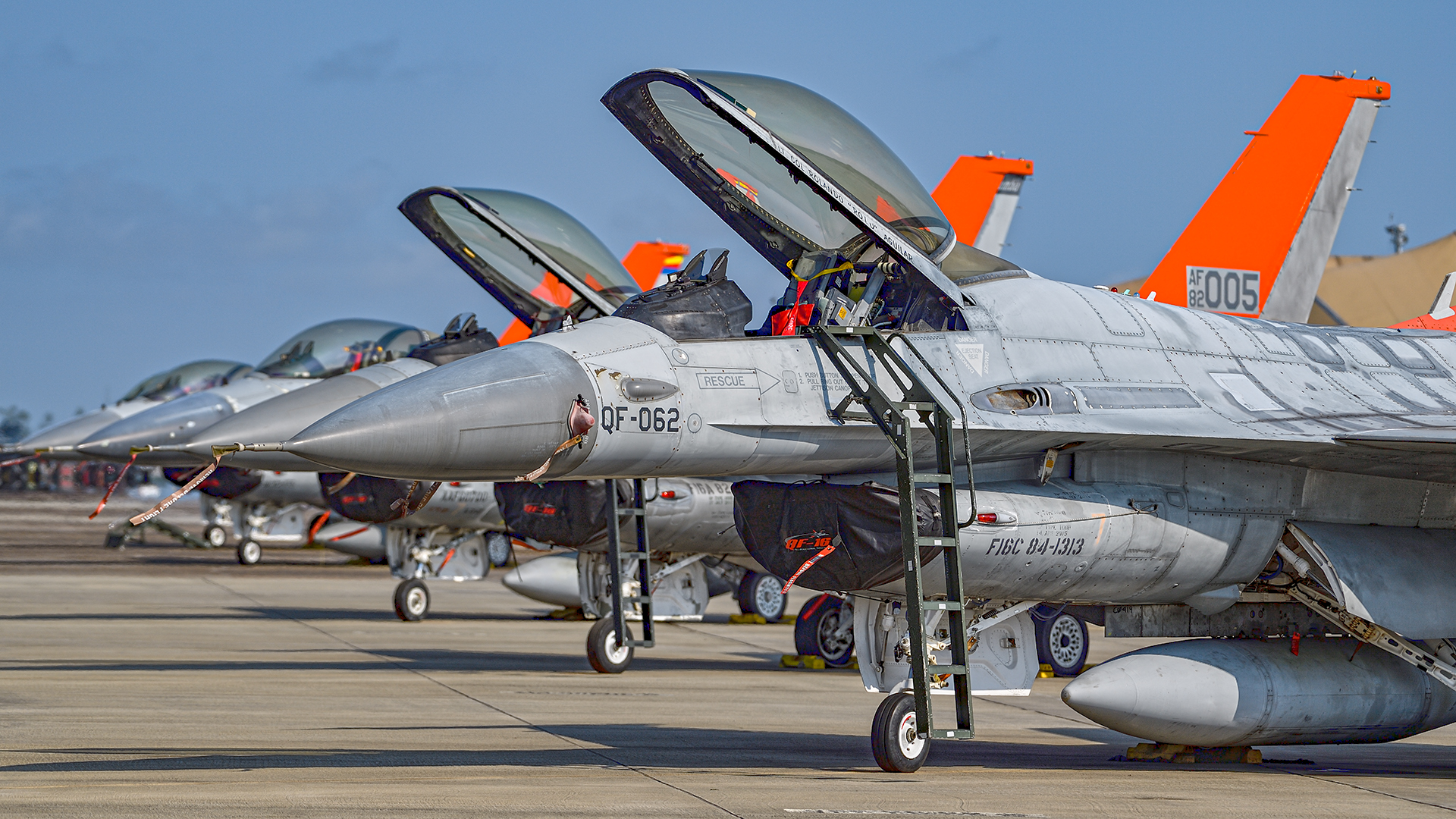
Boeing took ex-Air Force F-16s, that were dragged out of the boneyard in Arizona, and converted them with a variety of systems that enable them to be flown without a pilot in the cockpit. This ultimately means that they can be flown NULLO (Not Under Live Local Operator) to act as a realistic fighter-size target for live missile shots, and even to be shot down on specific occasions.

The QF-16s fly from Tyndall for the Combat Archer exercises and for test work (primarily in support of the Eglin Air Force Base test units), as well as from Holloman Air Force Base, New Mexico, where the 82nd ATRS has a detachment for test operations over the White Sands Missile Range.
Both the Air Force and Navy have operated retired fighter aircraft that have been converted as target drones since the early 1970s, with notable use of types such as the QF-86H Sabre, QF-100 Super Sabre, QF-106 Delta Dart, and QF-4 Phantom II.
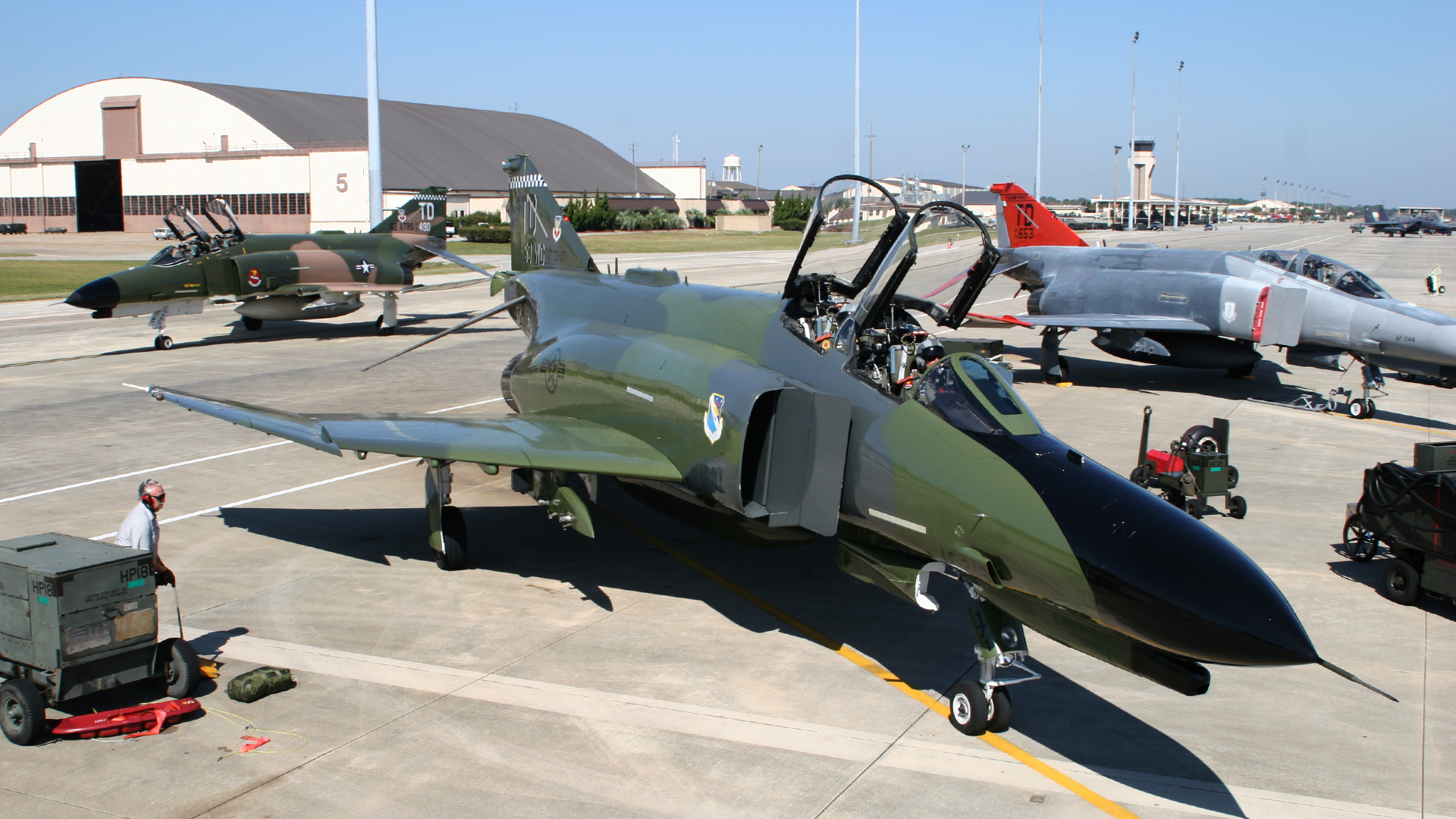
With the Navy having retired its last drone QF-4S Phantoms in 2003, the Air Force assumed sole responsibility for the mission within the U.S. Department of Defense. The latest, and likely last QF fighter conversion is the QF-16, which fully replaced QF-4 after its retirement in 2016.

“The QF-16s can go supersonic, pull 9g, and do everything a normal F-16 is able to do in combat, but they can do it unmanned so that missiles can be fired at them to see how the missile tracks and ultimately interacts with the target,” explains Col. Brian DeWitt, commander of the 53rd WEG, which oversees the QF-16 operations. A direct hit on a QF-16 is not intended every time. Indeed, around 20 QF-16s per year are earmarked for live fire testing, but only around six actually meet a fiery end and watery grave.
Many shots against these targets are scored by proximity ‘kills’ — a missile does not need to directly strike the target to bring it down. A warhead is designed to bring down a target even in close proximity. Often, the weapons used in testing or in Combat Archer do not have warheads, so a near miss is the desired outcome, and the QF-16 lives to fly another day.
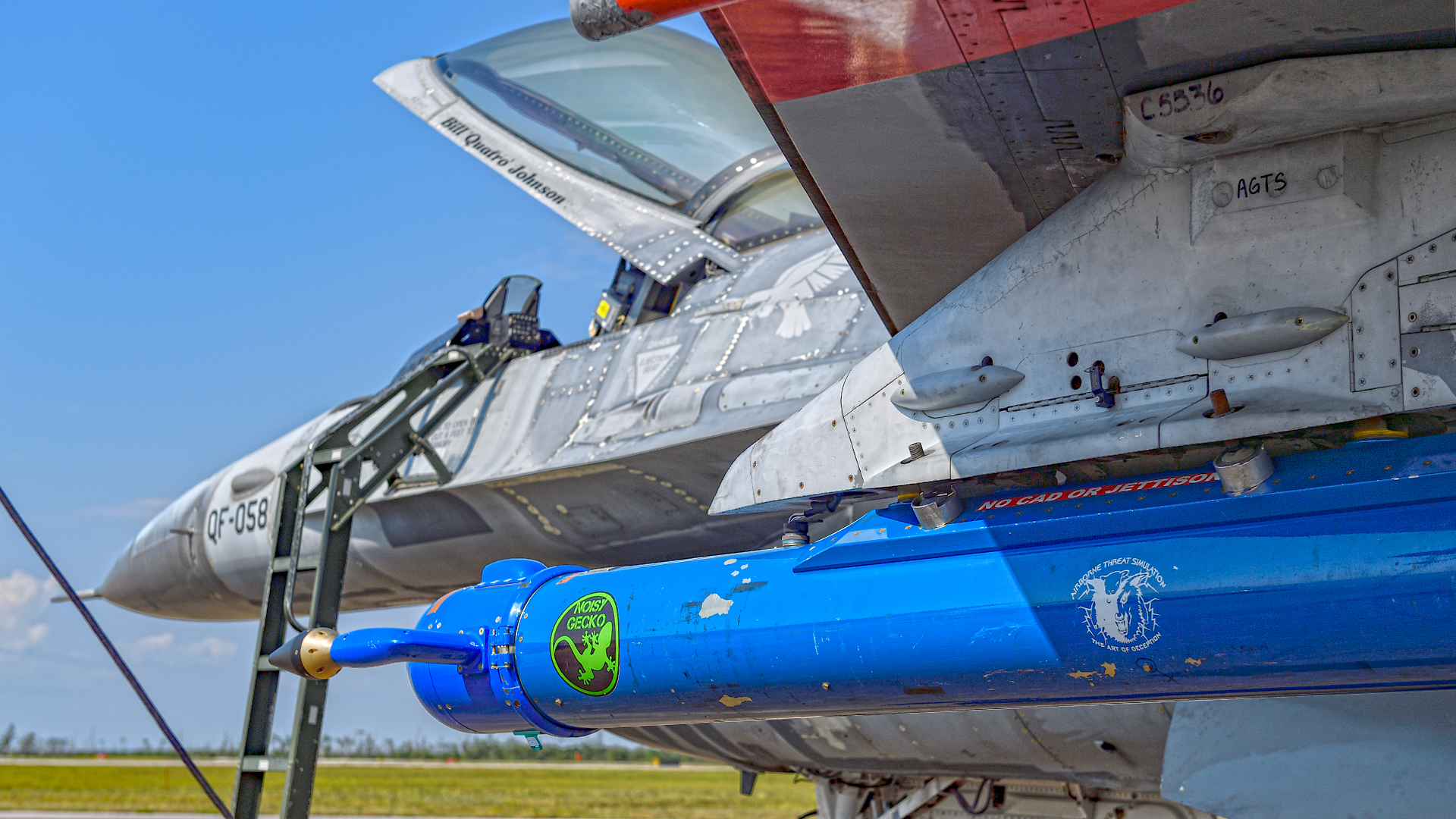
“I’ve been an X-ray since I first came to the 82nd ATRS, and back then I was flying the QF-4,” says Tom Mudge. “With the QF-4 we used to have a tall yellow van, and the X-rays would sit on top of that out by the droneway [drone runway] and use two control consoles — one at the front and another on the back. One pilot would fly the up and down and control the throttles, while the other would control the left and right inputs. We could manually land the QF-4 75 feet in front of us under manual control. That was exciting to say the least!”
“They didn’t want to do that with the QF-16. It has automatic takeoff and landing modes,” explains Mudge, who is a former U.S. Marine Corps fighter pilot. A mix of serving Air Force and ex-military aviators fly both the QF-16s and Kratos BQM-167 sub-scale drones at the 82nd ATRS. While the QF-16s are most notable for the unmanned NULLO live shootdown missions, they are regularly flown manned for both training and for practicing mission profiles and to rehearse specific presentations that are required for missile shots.
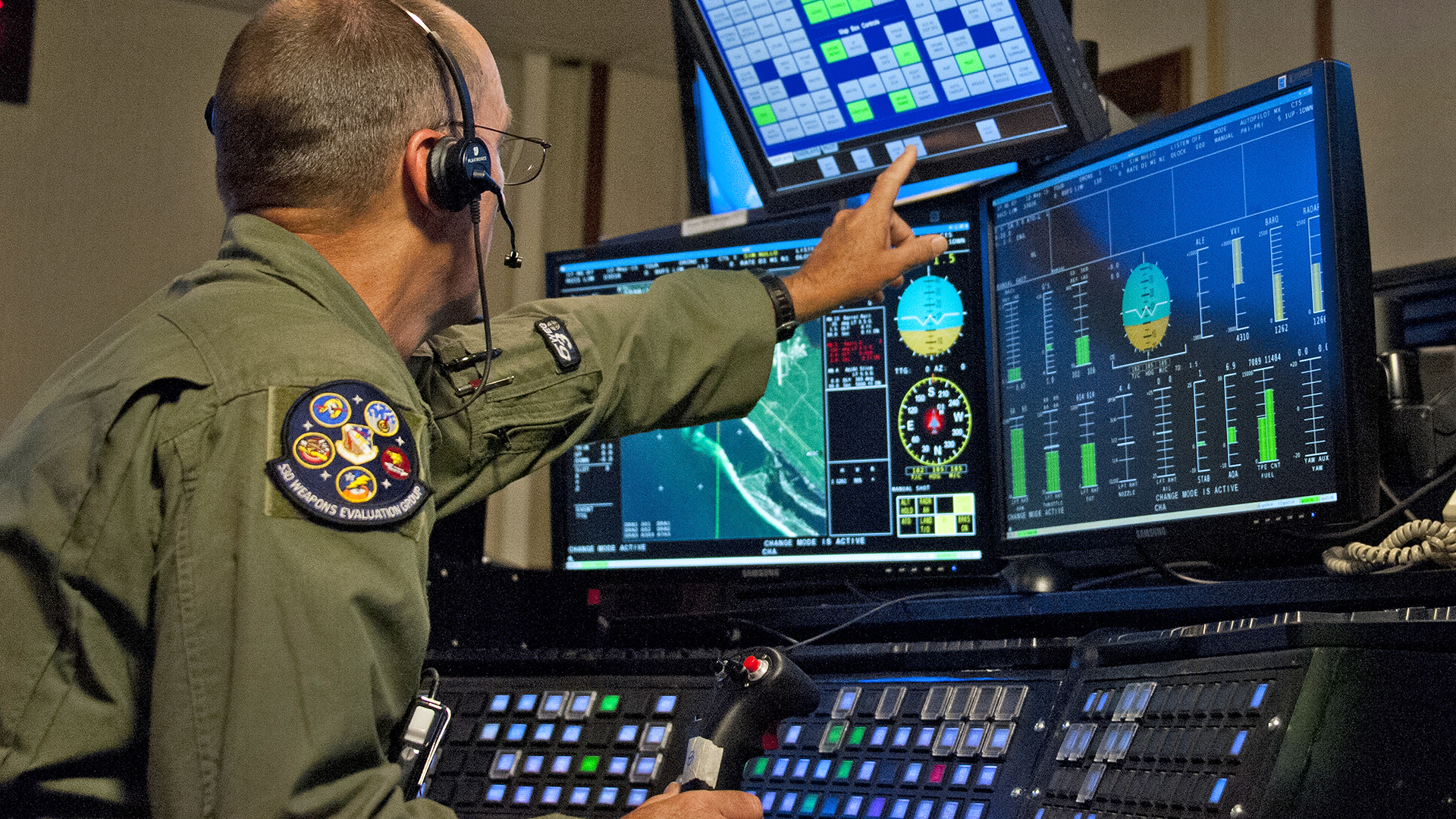
“We regularly fly in the cockpit of the QF-16, but with the aircraft under the control of an X-ray pilot. The only difference from a full-up NULLO is that the remote pilot does not have control of the brakes or the nosewheel steering to help mitigate risk. We sit there, with our hands off the controls, while the remote pilot practices maneuvers, recovering from unusual attitudes, that kind of thing. Sitting in the jet, we do have a paddle switch that means we can take control of the airplane. It’s a very weird feeling sitting there while the jet is being flown remotely!”
“The 82nd ATRS plays a critical role in Combat Archer, but that’s only about one third of their workload,” explains Col. DeWitt. A large percentage of the drone mission relates to testing new or improving existing weapons. For example, the QF-16s have been heavily involved in development tests for the Pentagon’s latest variants of the AIM-120D Advanced Medium-Range Air-to-Air Missile (AMRAAM) and the new AIM-260 Joint Advanced Tactical Missile (JATM).
“If, for example, we have a test missile that’s not fully developed yet, [the testers] will have certain profiles they want flown,” DeWitt continues. “The QF-16s will initially fly the profile with a pilot in the airplane as a safety observer to see how it is performing, to help test the profiles, all while being flown from the ground. They watch over all the planned maneuvers so that when it comes time to do the live shot in NULLO configuration, they do it without the pilot but use the same control parameters. This means that when it’s time to shoot the missile it’s not our first look at the test, we’ve flown the profile a couple of times and we are as certain as we can be that it’s all going to work as planned.”
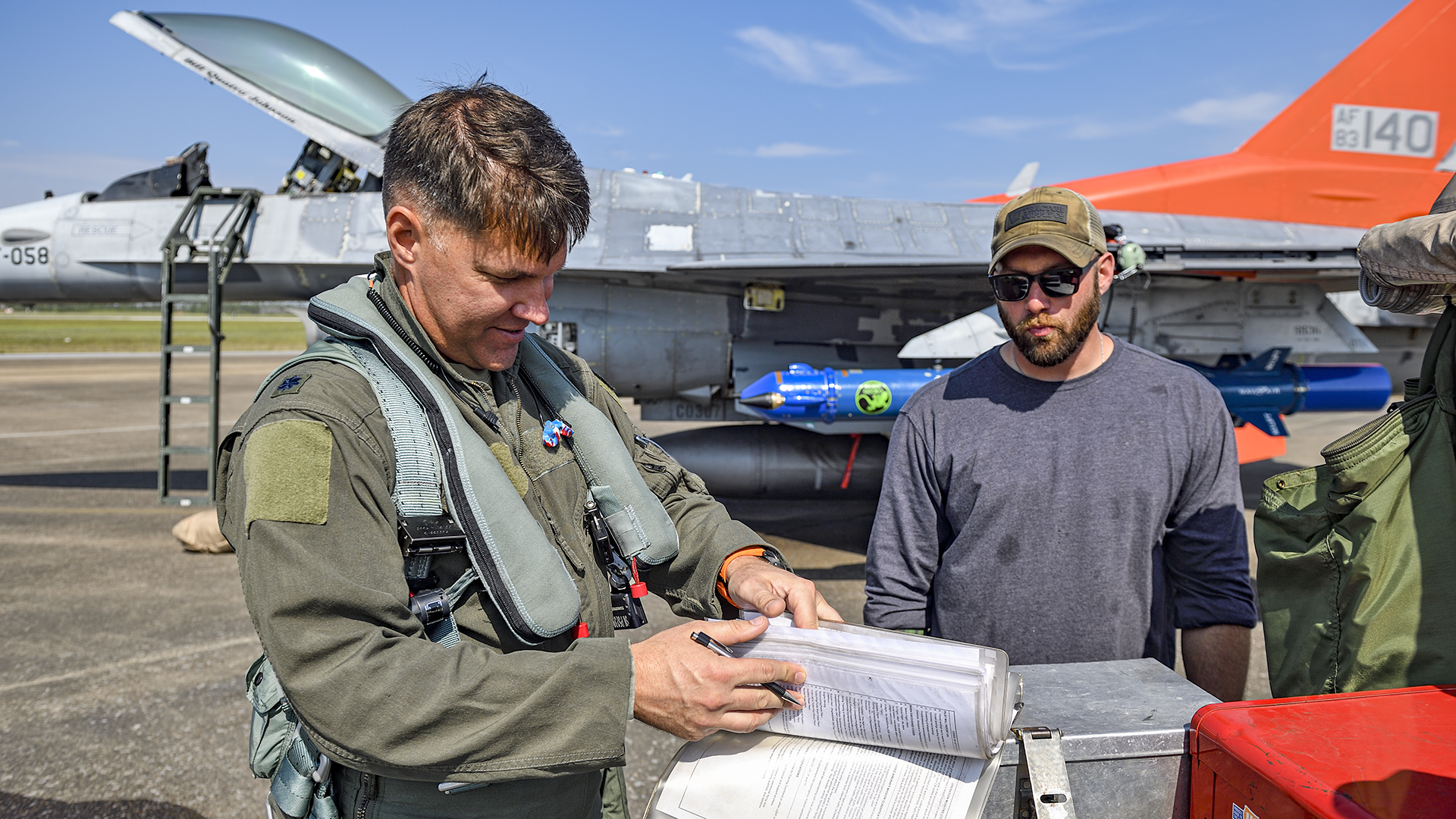
Further detailing the QF-16 NULLO operations, Tom Mudge explained to The War Zone exactly how things work. “We fly Blocks 15 and 25 QF-16As and Block 30 QF-16Cs. When we NULLO the Block 15s and 25s we put a Pratt & Whitney F100-PW-200 engine in the jet in place of their standard -220s, and the same with the General Electric F110-GE-100 engine in the Block 30. The newer engines are worth keeping, so we swap them out for the -200s, but these aren’t permitted for manned operations, only NULLO.”
“Preparation for a NULLO mission starts early. Once the jets earmarked for destruction have been selected we drag them out to the droneway — usually that’s a primary aircraft and a spare. Part of the preparation of the jet includes the contract maintainers getting the ‘bomb’ out to the jet.” The ‘bomb’ is actually a warhead from an AIM-9 Sidewinder, that is placed where the F-16 oxygen bottle usually sits, and is used as a self-destruct mechanism to terminate the QF-16 in-flight if it becomes damaged and unflyable during the mission, and it will fall into the sea.
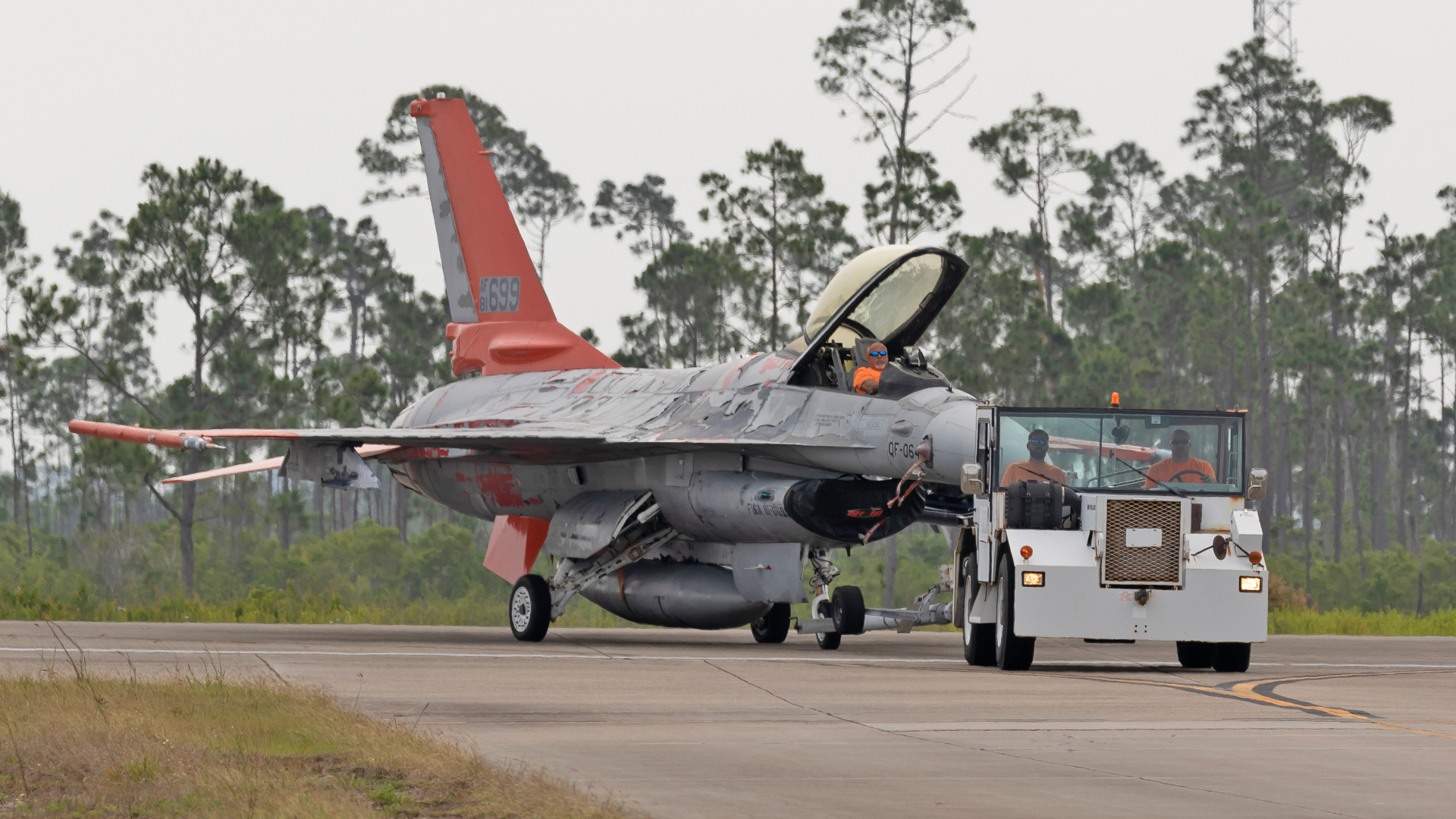
“The remote pilot then goes through the ‘bomb check’ to make sure the system is responding, test the radio frequencies and make sure the Gulf Range Drone Control System [GRDCS] is working,” Mudge explains. “About 45 minutes prior to launch, a maintainer climbs into the cockpit and starts the jet. They are on comms with us in the control station to check all the systems, cross check the instruments to ensure what they see in the cockpit tallies with what I am seeing via GRDCS. Then they climb out of the cockpit and close the canopy.”
“This is when, as the X-ray, I start getting nervous. I’ll complete the checks, and we then calibrate the GRDCS and the drone. We know the exact GPS spot where the jet is sitting, so we calibrate to make sure the system tallies with that. The chase QF-16 then takes off, and initially it makes sure the sea at the end of the runway under the takeoff path is clear. Then they close Highway 98 at the end of the droneway, I go through final checks, and then give the chase a one-minute call. I run up the power, check the instruments are reading correctly, then the chase calls ‘roll the drone, roll the drone!’”
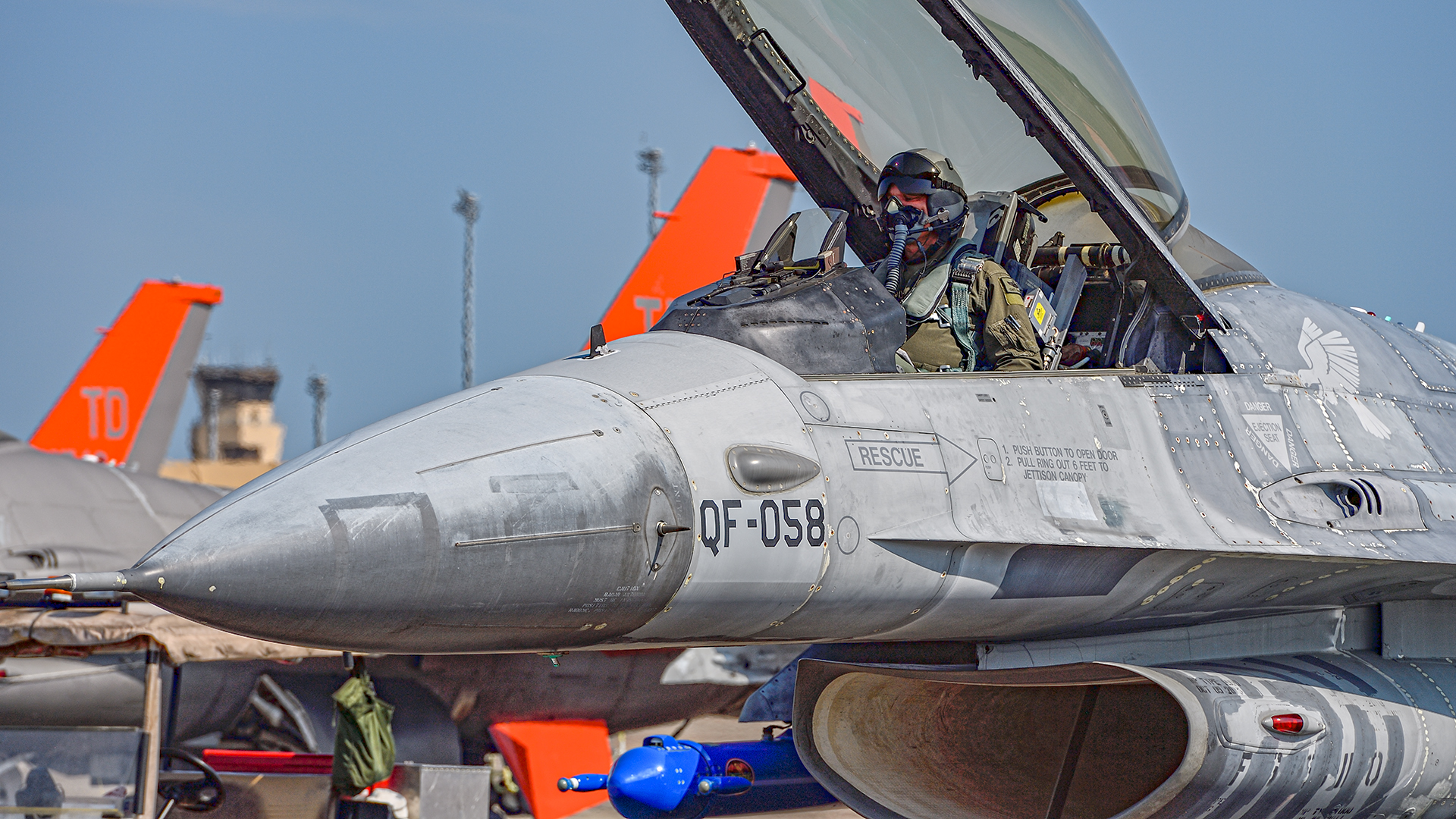
“At that point I go brakes off, and throttle to full military power [without afterburner]. The chase pilot checks the jet is tracking straight down the droneway, and if we are all good I hit the ATO [auto takeoff] button. The QF-16 goes fully automatic, it’s now in full afterburner, it will auto-rotate, and the gear retracts. It accelerates and climbs out, all automatically. At 1,000 feet I cancel the automatic mode and take over manual control, and from there I’m starting to fly the drone.”
“I keep as many auto modes engaged as I can, because I just don’t have the feel of being in the cockpit. I just have a screen of instruments, a facsimile of the head-up display [HUD], and a map to see where I am in the airspace. I typically have speed hold set on the throttle, and an auto hold on the pitch. I can set an airspeed and the GRDCS will maintain it. If we are doing a maneuver where the aircraft can’t maintain that set speed, I will have to manually change the power setting. I have a co-pilot next to me, who is known as a Yankee. They are typically keeping an eye on the big picture, watching my airspeed, things like that.”
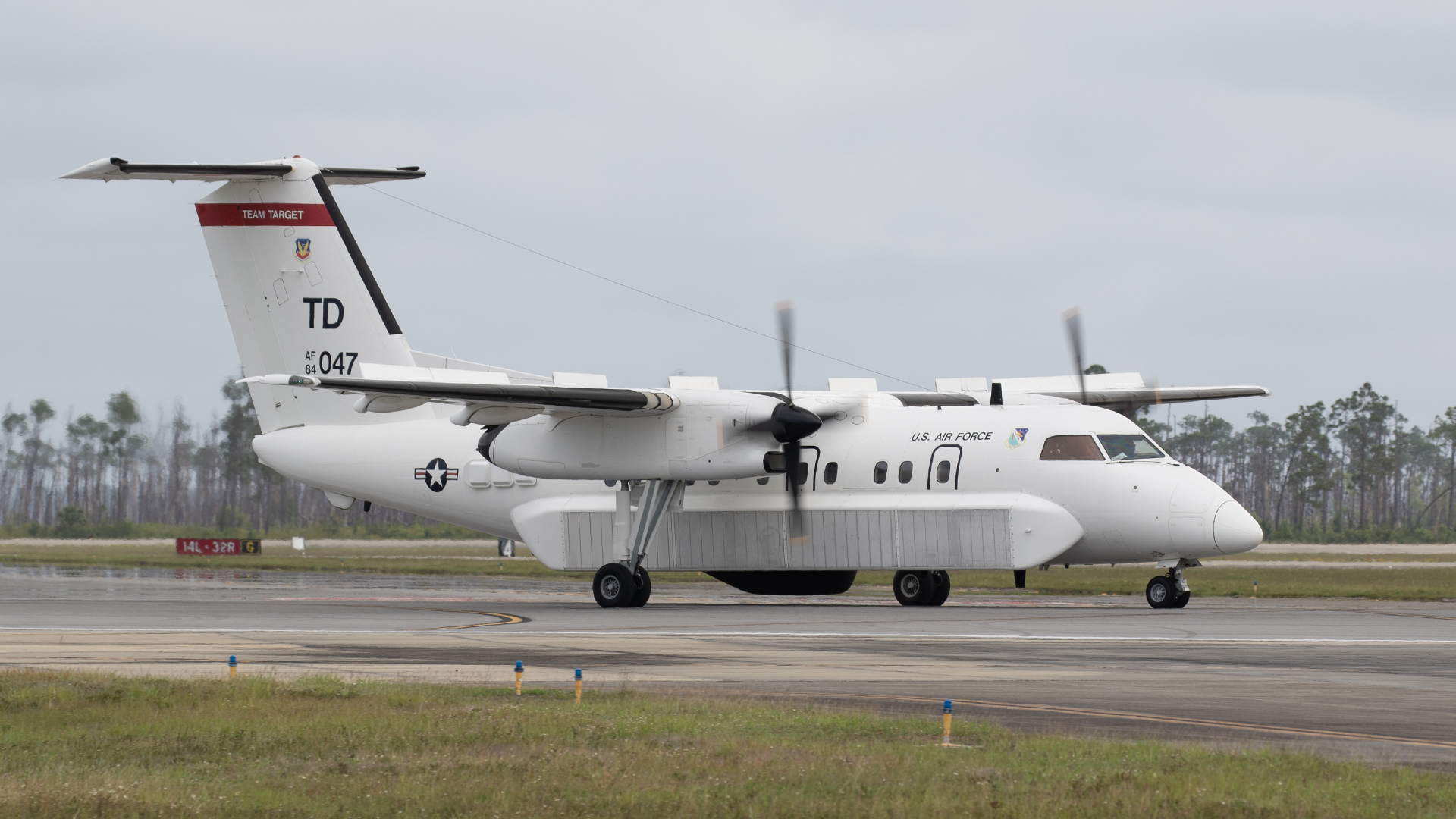
“One of the [surveillance-radar-equipped] E-9A Widget aircraft has meanwhile been establishing the shoot track, making sure we have a path that is clear of boats. Once we get the numbers for the shoot track I can fly manually or automatically in that track. Typically, if it’s a single-ship we use manual modes, but if we have a two-ship of QF-16s we use auto modes, because the system will fly formation.”
“On the WSEP mission this morning, we did a NULLO QF-16 profile. The visiting squadrons had the rare opportunity to shoot at a QF-16. We aren’t always trying for a direct hit on the drone — proximity is often sufficient. Today, an F-35 actually fired an AIM-120 that physically hit the drone. I immediately knew the airplane was uncontrollable. It still had power and it was still ‘talking’ to me, but we have an auto recovery button, and when I pressed it nothing happened. So it was evident that we had a hit and that the drone was out of control. I told the safety officer that I was no longer flying the drone, and they remotely destroyed it with the bomb. I can also do that from my console.”
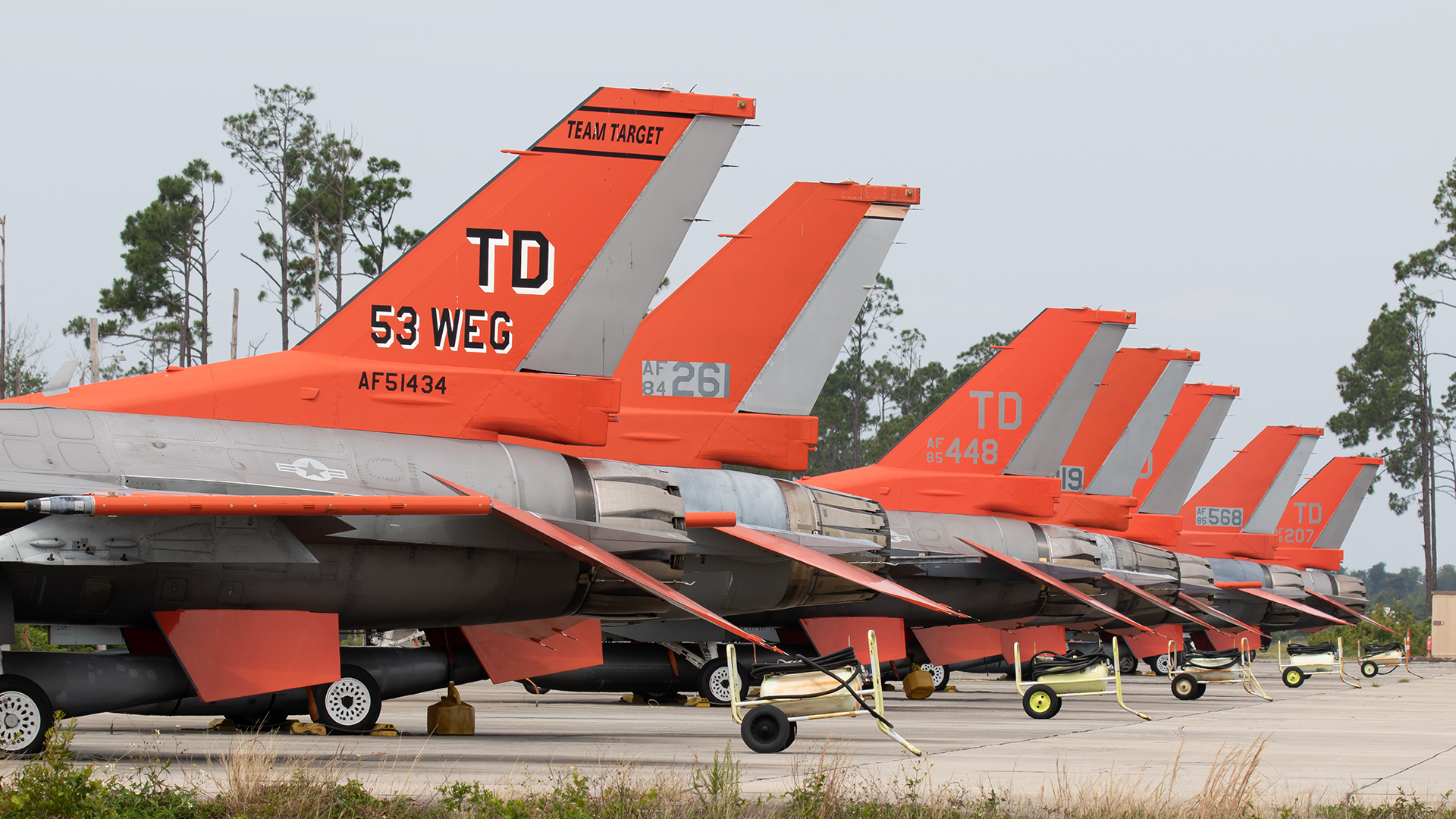
Supplementing the QF-16s are sub-scale BQM-167 drones, which the 82nd ATRS has operated since around 2007. These bright red drones are launched — rocket-assisted — from a small pad near Tyndall. They can be used to fly an array of different target presentations. They can employ chaff and flares, carry electronic attack pods, and simulate the electronic returns of enemy targets. The BQMs are more cost-effective to operate in comparison to the QF-16s, but they too are rarely destroyed. Instead, their small jet engine will flame out and the drone will ditch into the sea, to be recovered — if all goes to plan — by one of three 120-foot drone recovery vessels and four smaller boats that are used to recover targets.
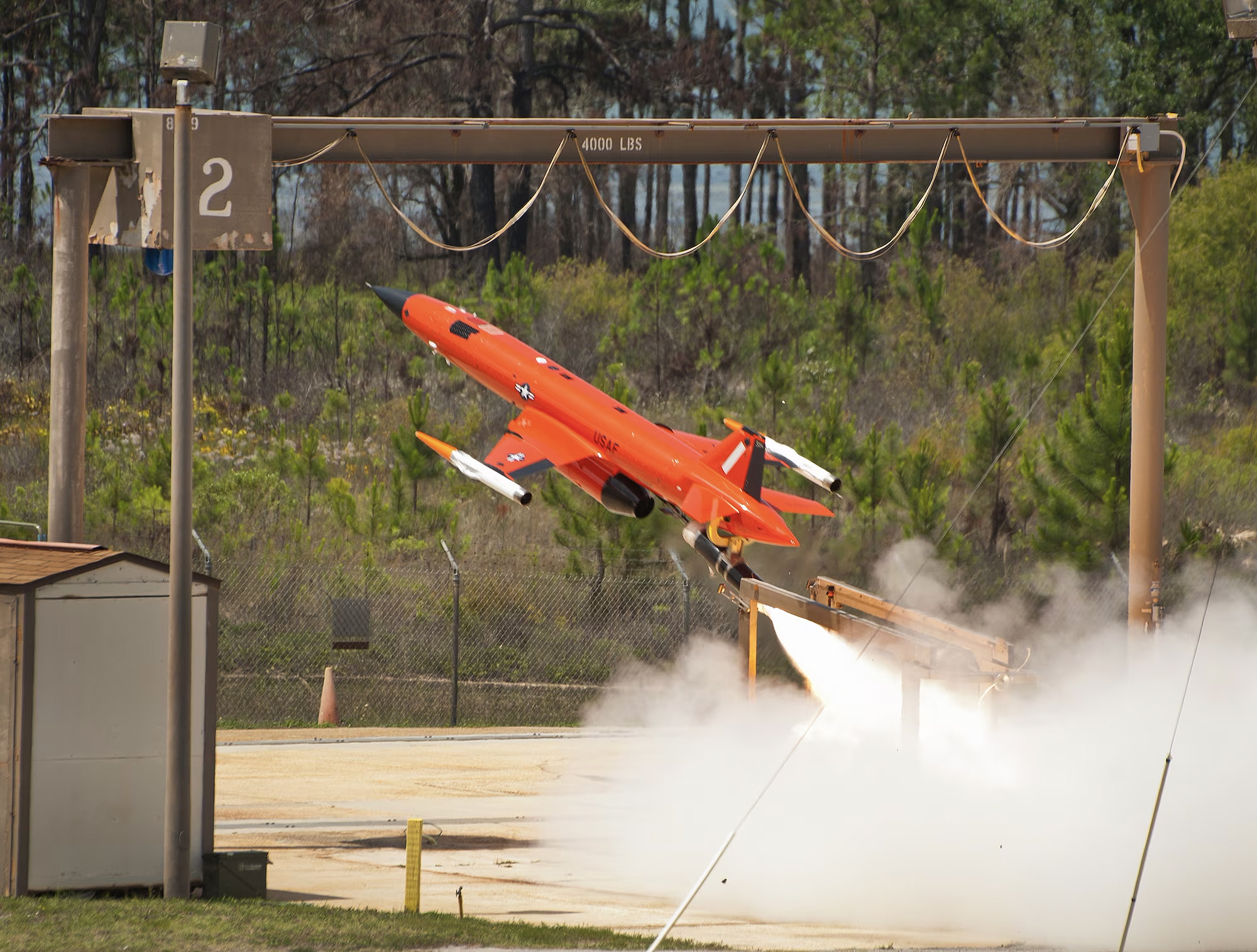
In July 2022, Boeing delivered the last of 75 ‘Zombie Vipers’ that it converted at its Cecil Field, Florida, facility since 2013. The lack of availability of suitable retired fighter jet airframes to convert, coupled with the advance in drone technology, and a need to remain cost-effective means that the next-generation of FSAT will be a purpose-designed drone.
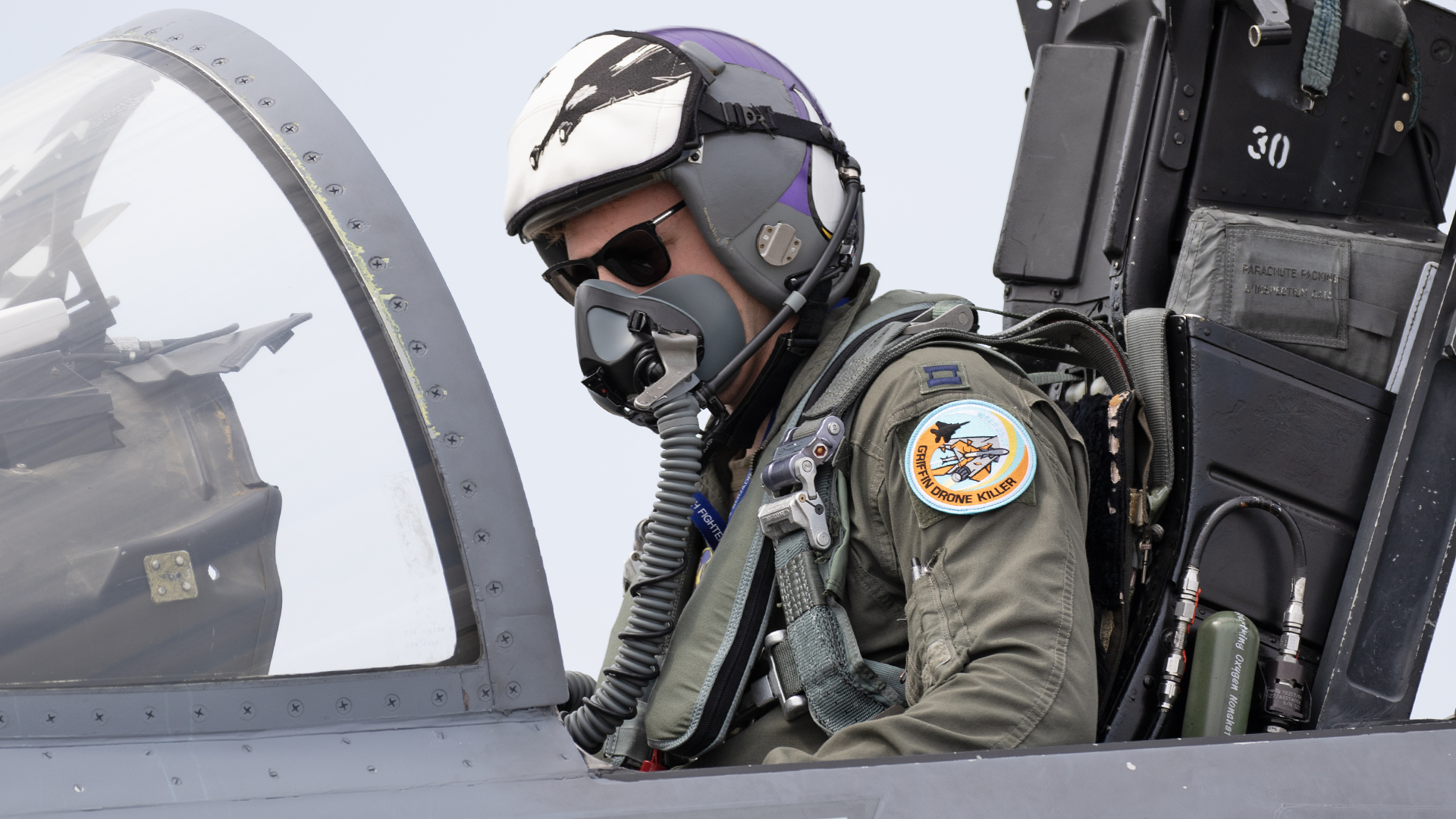
“There’s a couple of programs we are looking at right now,” explains Col. DeWitt. “The Next-Generation Aerial Target, known as NGAT, and the Fifth-Generation Aerial Target, known as 5GAT. Requirements call for a completely unmanned drone program that will fulfill the full-scale requirement but allow us to do more electronic attack and also offer some different options. We have a limited number of QF-16s and when they are exhausted we need something else that allows us to continue doing the things the same way we do now. We are in a mix of proposals and contests between different companies right now.”
The QF-16 fleet will slowly be exhausted over the next few years, and the replacement full-scale target will gradually take its place. This means that some of the most fascinating flying in the Air Force — manned QF-16 operations — will come to an end. But that’s still a few years away, and for the time being Tom Mudge and his 82nd ATRS colleagues will continue to fly some of the most fascinating and stressful missions in the Air Force.
In the next installment, The War Zone meets the squadrons participating in WSEP, and details how the 53rd WEG coaches them through the rigors of Combat Archer.
Editor’s note: Our sponsorship partner has no editorial involvement in this article.
Contact the editor: Tyler@thedrive.com
